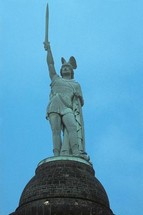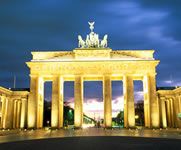Other highlights
Contact
Niedersächsisches Staatsbad Pyrmont
Heiligenangerstrasse 6
31812 Bad Pyrmont
Email:
info@staatsbad-pyrmont.de
Internet:
www.staatsbad-pyrmont.de
Heiligenangerstrasse 6
31812 Bad Pyrmont
Email:
info@staatsbad-pyrmont.de
Internet:
www.staatsbad-pyrmont.de
Art & culture

Visit Hämelschenburg Castle - one of Germany's foremost cultural monuments - for a journey into the world of the Renaissance. With its art collections, gardens, service quarters and church, this impressive castle is considered one of the finest examples of Weser Renaissance architecture and one of Germany's most beautiful Renaissance complexes. On an individual guided tour, you will visit a number of historical rooms from the entrance hall to the vaulted cellars.
The monument to Hermann the Cheruscan stands in the Teutoburg Forest near Detmold in the beautiful Lippe region. It commemorates the Varus battle (or Hermann's battle) in 9 AD during which the entire Roman occupying force consisting of three legions and six auxiliary contingents, an army of about 25,000 men all together, suffered a devastating defeat.
Just a few kilometres from Hermann the Cheruscan's statue is the impressive Externsteine natural monument, which stands 40 metres high. It is part of the mountain range of the Teutoburg Forest that was formed during the Cretaceous period and consists predominantly of sandstone. This striking group of rocks is also part of the nature reserve of the same name. Relics from the Upper Palaeolithic found here, such as flint tools, spearheads, blades and stone chippings, show that there were people living at the foot of these rocks in around 10,000 BC.
Travel Planner
Select an option...
Map of Germany
Hotels in Bad Pyrmont
Loading



